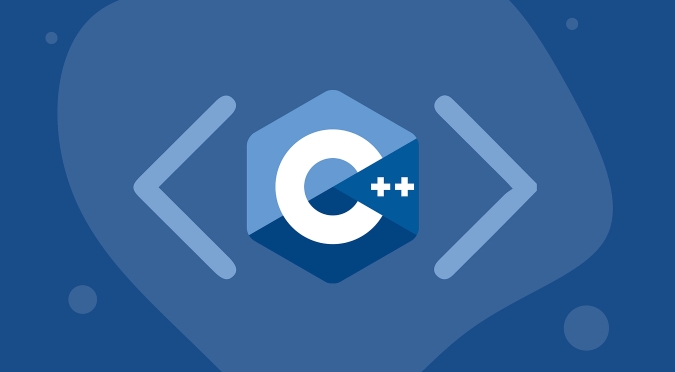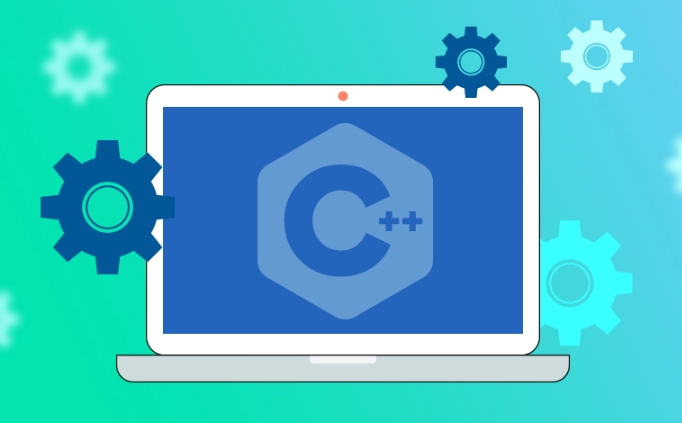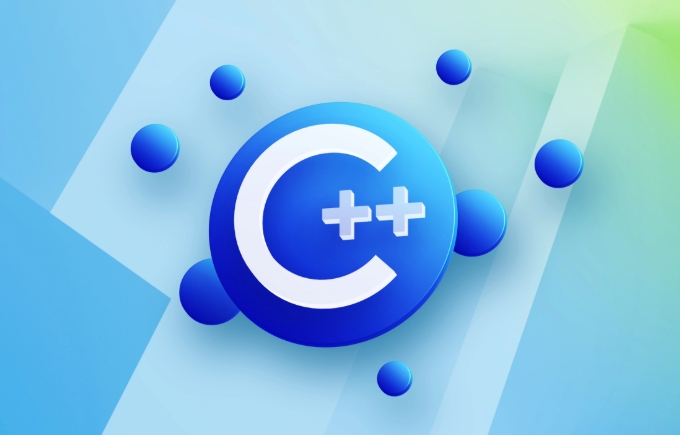Installing Google Benchmark requires cloning the benchmark and googletest repository first, creating a build directory, and using CMake to compile and install; 2. Write main.cpp containing multiple performance test functions, register the test function using BENCHMARK macro, prevent optimization through benchmark::DoNotOptimize, set the input scale with Arg and Range, and analyze the time complexity by Complexity; 3. Write the CMakeLists.txt file, configure the minimum version of CMake, project name, and C 17 standard, use find_package to find benchmark, and build executable through add_executable and target_link_libraries; 4. Run cmake .. and make in the build directory Compile the project, execute ./bench to run benchmark tests, and add parameters such as --benchmark_filter or --benchmark_format=json to control the output; 5. The output results show the average time and execution times of each test case, which can be used to compare the performance differences between different implementations, and finally draw the conclusion that Google Benchmark can effectively perform micro benchmark tests.

Writing a C Google Benchmark example is actually very simple. Here is a complete, directly run example showing how to use the Google Benchmark library to measure the performance of a function.

? 1. Install Google Benchmark
If you haven't installed Google Benchmark, you can install it in the following ways (taking Ubuntu as an example):
git clone https://github.com/google/benchmark.git git clone https://github.com/google/googletest.git benchmark/googletest mkdir build && cd build cmake ../benchmark make -j8 sudo make install
Make sure you have CMake and compilers (such as g) that support C11 or higher.

? 2. Write benchmark sample code
Here is a simple main.cpp that compares two functions: std::sqrt and a loop version written manually (just to demonstrate performance differences).
#include <benchmark/benchmark.h>
#include <cmath>
#include <vector>
// Tested function 1: Use std::sqrt
static void BM_SqrtStd(benchmark::State& state) {
double x = 3.14159;
for (auto _ : state) {
benchmark::DoNotOptimize(std::sqrt(x));
x = 0.00001; // Prevent it from being completely optimized}
}
BENCHMARK(BM_SqrtStd);
// Function under test 2: Simulate a "slow" operation (actually, it is still using sqrt, but add points to loop)
static void BM_SqrtLoop(benchmark::State& state) {
double x = 3.14159;
for (auto _ : state) {
for (int i = 0; i < 10; i) {
x = std::sqrt(xi);
}
benchmark::DoNotOptimize(x);
}
}
BENCHMARK(BM_SqrtLoop);
// Compare vector push_back vs reserve push_back
static void BM_VectorPushBack(benchmark::State& state) {
for (auto _ : state) {
std::vector<int> v;
for (int i = 0; i < state.range(0); i) {
v.push_back(i);
}
}
state.SetComplexityN(state.range(0));
}
BENCHMARK(BM_VectorPushBack)->Arg(1024)->Arg(8192);
static void BM_VectorPushBackWithReserve(benchmark::State& state) {
for (auto _ : state) {
std::vector<int> v;
v.reserve(state.range(0)); // Assign for (int i = 0; i < state.range(0); i) {
v.push_back(i);
}
}
state.SetComplexityN(state.range(0));
}
BENCHMARK(BM_VectorPushBackWithReserve)->Arg(1024)->Arg(8192);
// Register a benchmark with parameters (using Range)
BENCHMARK(BM_VectorPushBack)->Range(8, 8 << 4); // 8 to 128
BENCHMARK(BM_VectorPushBackWithReserve)->Range(8, 8 << 4);
// Add an example of using BigO to measure complexity static void BM_Sort(benchmark::State& state) {
std::vector<int> v(state.range(0));
std::generate(v.begin(), v.end(), rand);
for (auto _ : state) {
std::sort(v.begin(), v.end());
}
state.SetComplexityN(state.range(0));
}
BENCHMARK(BM_Sort)->Range(1<<4, 1<<10)->Complexity(benchmark::oNLogN);
// Main function BENCHMARK_MAIN();? 3. Write CMakeLists.txt
Create a CMakeLists.txt to compile the project:

cmake_minimum_required(VERSION 3.14) project(my_benchmark) set(CMAKE_CXX_STANDARD 17) find_package(benchmark REQUIRED) add_executable(bench main.cpp) target_link_libraries(bench benchmark::benchmark)
? 4. Compile and run
mkdir build && cd build cmake .. Make # Run benchmark ./bench
You can also add parameters to control the output format:
./bench --benchmark_format=json --benchmark_out=result.json
Or just run a test:
./bench --benchmark_filter=BM_Vector
? Output example (excerpt)
BM_SqrtStd 10 ns 10 ns 100000000 BM_SqrtLoop 150 ns 150 ns 10000000 BM_VectorPushBack/1024 2.5 us 2.5 us 300000 BM_VectorPushBack/8192 30.2 us 30.2 us 23000 BM_VectorPushBackWithReserve/1024 1.8 us 1.8 us 400000 BM_VectorPushBackWithReserve/8192 20.1 us 20.1 us 35000
? Tips
-
benchmark::DoNotOptimize(...): prevents the compiler from optimizing the side effects without side effects. -
state.PauseTiming()/state.ResumeTiming(): Avoid counting measurement time during the setup phase. -
->Arg()and->Range(): used to test different input sizes. -
Complexity(benchmark::oNLogN): Let benchmark automatically fit time complexity.
Basically that's it. Google Benchmark is quick to use and is suitable for microbenchmark testing, especially when optimizing critical path functions. Just remember not to test the code optimized by the compiler.
The above is the detailed content of C google benchmark example. For more information, please follow other related articles on the PHP Chinese website!

Hot AI Tools

Undress AI Tool
Undress images for free

Undresser.AI Undress
AI-powered app for creating realistic nude photos

AI Clothes Remover
Online AI tool for removing clothes from photos.

Clothoff.io
AI clothes remover

Video Face Swap
Swap faces in any video effortlessly with our completely free AI face swap tool!

Hot Article

Hot Tools

Notepad++7.3.1
Easy-to-use and free code editor

SublimeText3 Chinese version
Chinese version, very easy to use

Zend Studio 13.0.1
Powerful PHP integrated development environment

Dreamweaver CS6
Visual web development tools

SublimeText3 Mac version
God-level code editing software (SublimeText3)

Hot Topics
 What is high-frequency virtual currency trading? The principles and technical implementation points of high-frequency trading
Jul 23, 2025 pm 11:57 PM
What is high-frequency virtual currency trading? The principles and technical implementation points of high-frequency trading
Jul 23, 2025 pm 11:57 PM
High-frequency trading is one of the most technologically-rich and capital-intensive areas in the virtual currency market. It is a competition about speed, algorithms and cutting-edge technology that ordinary market participants are hard to get involved. Understanding how it works will help us to have a deeper understanding of the complexity and specialization of the current digital asset market. For most people, it is more important to recognize and understand this phenomenon than to try it yourself.
 Explain RAII in C
Jul 22, 2025 am 03:27 AM
Explain RAII in C
Jul 22, 2025 am 03:27 AM
RAII is an important technology used in resource management in C. Its core lies in automatically managing resources through the object life cycle. Its core idea is: resources are acquired at construction time and released at destruction, thereby avoiding leakage problems caused by manual release. For example, when there is no RAII, the file operation requires manually calling fclose. If there is an error in the middle or return in advance, you may forget to close the file; and after using RAII, such as the FileHandle class encapsulates the file operation, the destructor will be automatically called after leaving the scope to release the resource. 1.RAII is used in lock management (such as std::lock_guard), 2. Memory management (such as std::unique_ptr), 3. Database and network connection management, etc.
 C vector get first element
Jul 25, 2025 am 12:35 AM
C vector get first element
Jul 25, 2025 am 12:35 AM
There are four common methods to obtain the first element of std::vector: 1. Use the front() method to ensure that the vector is not empty, has clear semantics and is recommended for daily use; 2. Use the subscript [0], and it also needs to be judged empty, with the performance comparable to front() but slightly weaker semantics; 3. Use *begin(), which is suitable for generic programming and STL algorithms; 4. Use at(0), without manually null judgment, but low performance, and throw exceptions when crossing the boundary, which is suitable for debugging or exception handling; the best practice is to call empty() first to check whether it is empty, and then use the front() method to obtain the first element to avoid undefined behavior.
 How to develop AI-based text summary with PHP Quick Refining Technology
Jul 25, 2025 pm 05:57 PM
How to develop AI-based text summary with PHP Quick Refining Technology
Jul 25, 2025 pm 05:57 PM
The core of PHP's development of AI text summary is to call external AI service APIs (such as OpenAI, HuggingFace) as a coordinator to realize text preprocessing, API requests, response analysis and result display; 2. The limitation is that the computing performance is weak and the AI ecosystem is weak. The response strategy is to leverage APIs, service decoupling and asynchronous processing; 3. Model selection needs to weigh summary quality, cost, delay, concurrency, data privacy, and abstract models such as GPT or BART/T5 are recommended; 4. Performance optimization includes cache, asynchronous queues, batch processing and nearby area selection. Error processing needs to cover current limit retry, network timeout, key security, input verification and logging to ensure the stable and efficient operation of the system.
 C bit manipulation example
Jul 25, 2025 am 02:33 AM
C bit manipulation example
Jul 25, 2025 am 02:33 AM
Bit operation can efficiently implement the underlying operation of integers, 1. Check whether the i-th bit is 1: Use n&(1
 C function example
Jul 27, 2025 am 01:21 AM
C function example
Jul 27, 2025 am 01:21 AM
Functions are the basic unit of organizing code in C, used to realize code reuse and modularization; 1. Functions are created through declarations and definitions, such as intadd(inta,intb) returns the sum of the two numbers; 2. Pass parameters when calling the function, and return the result of the corresponding type after the function is executed; 3. The function without return value uses void as the return type, such as voidgreet(stringname) for outputting greeting information; 4. Using functions can improve code readability, avoid duplication and facilitate maintenance, which is the basic concept of C programming.
 Understanding the C ABI
Jul 24, 2025 am 01:23 AM
Understanding the C ABI
Jul 24, 2025 am 01:23 AM
C ABI is the underlying rule that the compiler follows when generating binary code, which determines mechanisms such as function calls, object layout, name adaptation, etc. 1. It ensures that different compilation units interact correctly, 2. Different compilers or versions may adopt different ABIs, affecting dynamic library links, STL transfers, virtual function calls, etc. 3. Cross-platform development, long-term system maintenance, third-party library use and other scenarios need to pay special attention to ABI consistency, 4. ABI can be controlled through macro definitions and compilation options, and use tools to view the symbol table to judge consistency.
 C std::is_same example
Jul 24, 2025 am 03:22 AM
C std::is_same example
Jul 24, 2025 am 03:22 AM
std::is_same is used to determine whether the two types are exactly the same at compile time and return a bool value. 1. In the basic usage, std::is_same::value is true when T and U are exactly the same, otherwise it is false. Different modifiers such as const, reference, pointer, etc. will cause false; 2. You can remove the type modification with std::remove_const, std::remove_reference and other types, and then compare it to achieve more flexible type judgment; 3. It is often used in template metaprogramming in practical applications, such as conditional compilation with ifconstexpr, and perform different logic according to different types; 4.






